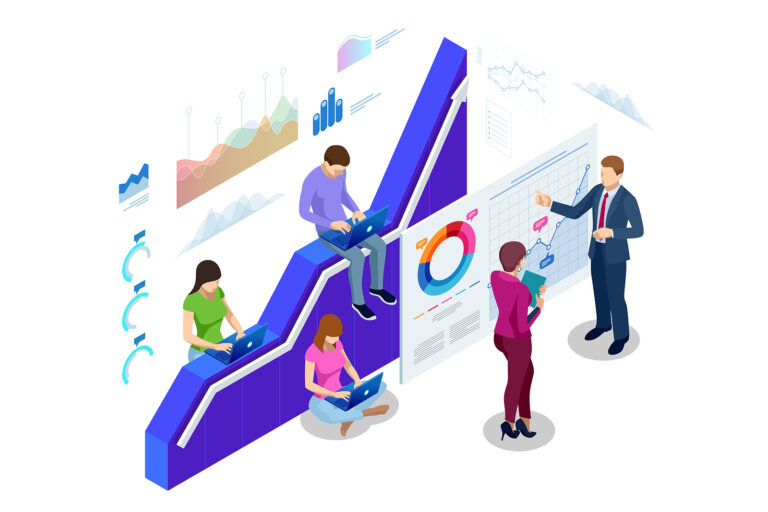We all want to know that our business is doing well. But for some aspects, such as marketing, it can be hard to gauge success. In this series, we’re taking a look at marketing analytics – so you can know what they are, what they do, and if they are something to watch for your business. In this article, we’re looking at Key Performance Indicators (KPIs), from answering what are KPIs to knowing which are important for your business to track.
What are KPIs?
When using analytics and reporting software (such as Google Analytics or Swydo), you’ll probably see some numbers jump out at you – literally. These larger numbers at the top of analytics pages and report templates are Key Performance Indicators or KPIs. These are simple-to-read numbers that (usually) track basic functions of your digital marketing, things like website traffic, post likes, and Cost-Per-Click on ads. These tend to be represented as a number of actions, percentage increase or decrease compared to the last period, or the cost per a specific action.
Picking the Right KPIs to Track
Not all KPIs are going to be important to your business. If your marketing is a closed system on social media, visits to your website aren’t going to be important to you. If you have a high amount of organic traffic (such as from blogs), you’re not going to care as much about bounce rate as you bring in many users (only some of which are interested in your services). Use the guide below on what to focus on (and add to) your analytics and reporting:
- Website Traffic: If getting people to visit your website is your marketing goal, look at Users, Sessions, and Bounce Rate KPIs to know how many are visiting and if it’s trending up or down.
- Advertising: If you’re using advertising to bring people from other places to your website, look at the Clicks and Impressions and individual Cost Per Click (CPCs) per ad platform. If you have Conversions set up, check for highs and lows and how they compare with other KPIs.
- Email Marketing: If you sent out eblasts and newsletters, look at the Open Rates and Link Clicks, and if you’re suffering high Unsubscribe rates for specific email marketing.
- Social Media: If you’re using social media’s analytics or reports using their APIs, look at Engagement metrics to see if you’re getting traction, not just Impressions and Clicks.
Understanding Marketing Analytics: KPIs are a Starting Point
If there’s one thing to bring away from this blog, it’s that KPIs cannot tell you what is going wrong with your marketing – they can only tell you there’s a potential problem. KPIs work best when they can show you gross change (good or bad), but you’ll need to dive deeper into your reports and analytics to figure out the why: this may mean talking with those who handle those individual projects in-house or talking to a marketing agency to figure out where things went wrong or right. Just remember not to obsess about a single metric to the point of avoiding others.
If you’re looking for help with understanding your marketing analytics, including audits and monthly or quarterly reporting, Vision can help. We’ve worked with clients for years introducing blogs, social media, and advertising to their marketing and know what success looks like with KPIs and deep analytics. Contact us today to get started.




